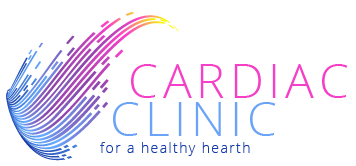![]() +12 345 678 90
+12 345 678 90 ![]() clinic@cardiac.co.uk
clinic@cardiac.co.uk
Chest pain and angina
The most common symptom of coronary artery disease is angina or "angina pectoris," also known simply as chest pain. Angina can be described as a discomfort, heaviness, pressure, aching, burning, fullness, squeezing, or painful feeling due to coronary heart disease. Often, it can be mistaken for indigestion.
Angina is usually felt in the chest, but may also be felt in the shoulders, arms, neck, throat, jaw, or back.
If you experience these symptoms, take notice. If you've never been diagnosed with heart disease, you should seek treatment immediately. If you've had angina before, use your angina medications as directed by your doctor and try to determine if this is your regular pattern of angina or if the symptoms are worse.
What Causes Angina?
Angina is caused when blood flow to an area of the heart is decreased, impairing the delivery of oxygen and vital nutrients to the heart muscle cells. When this happens, the heart muscle must use alternative, less efficient forms of fuel so that it can perform its function of pumping blood to the body. The byproduct of using this less efficient fuel is a compound called lactic acid that builds up in the muscle and causes pain. Some medications used to treat angina work by inhibiting the use of this fuel source.
What Are the Types of Angina?
The types of angina are:
- Stable angina. The pain is predictable and present only during exertion or extreme emotional distress, and it disappears with rest.
- Unstable angina. This may signal an impending heart attack. Unstable angina is angina pain that is different from your regular angina pain or pain that occurs while at rest. The angina may occur more frequently, more easily at rest, feel more severe, last longer, or come on with minimal activity. Although this type of angina can often be relieved with medication, it is unstable and may progress to a heart attack. Usually more intense medical treatment or a procedure is required.
- Prinzmetal's angina. This is when angina occurs at rest, when sleeping, or when exposed to cold temperatures. In these cases, the symptoms are caused by decreased blood flow to the heart muscle from a spasm of the coronary artery. The majority of people with this type of angina also have coronary artery disease. These spasms occur close to the blockage.
Can Angina Occur Without Coronary Disease?
Angina can occur in the absence of any coronary disease. Up to 30% of people with angina with a heart valve problem called aortic stenosis, which can cause decreased blood flow to the coronary arteries from the heart. People with severe anemia may have angina because their blood doesn't carry enough oxygen. People with thickened heart muscles need more oxygen and can have angina when they don't get enough.
